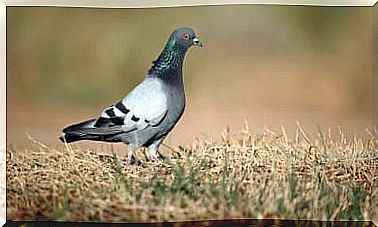5 Things You Should Know To Give First Aid To Your Dog
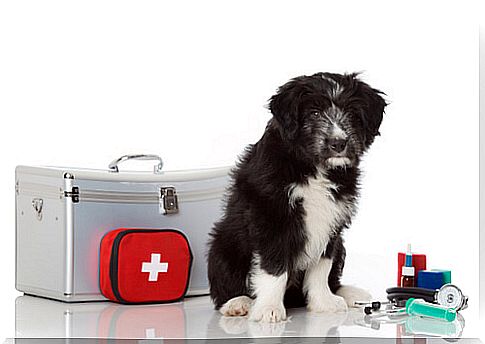
In an emergency situation, the important thing is to remain calm, always. For this reason, we tell you five things you should know to give first aid to your dog.
1. keep calm
In an emergency you should always remain calm. Inspiring tranquility and security is very important for a good performance. Animals sense our state of mind, and if the situation is already stressful enough for the animal to be nervous, getting upset will only make the animal’s state worse.
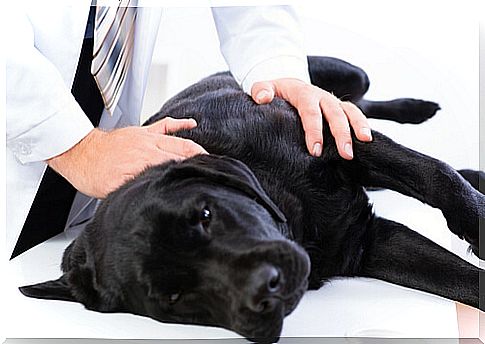
2. Keep your pet away from the source of danger
The first thing is to keep the animal away from danger, whatever it may be, and put it to safety guaranteeing our own safety.
3. Observe the symptoms
Observe your dog so that you can describe his condition to an emergency vet. Depending on the system that is affected, the symptoms may be different:
- Respiratory system : dyspnea (shortness of breath), bradypnea (slow breathing), tachypnea (rapid breathing), breath sounds, drowning …
- Circulatory system : pale mucous membranes, bradycardia (weak pulse), very fast pulse (tachycardia), hypothermia, bleeding …
- Nervous system : unconsciousness, seizures, paralysis, loss of proprioception, head tilt, absence of pupillary reflex …
- Renal insufficiency
- Car accident injuries
- Pain
- Burns, allergic reactions
- Electrocution
- Heatstroke
- Profuse vomiting and diarrhea
- Immobility
4. Find the nearest vet or emergency room
Many veterinarians offer 24-hour emergency services, which will incur an additional cost for the emergency itself, the movement of personnel and the possible unscheduled intervention. We must be aware that these expenses are justified in most cases.
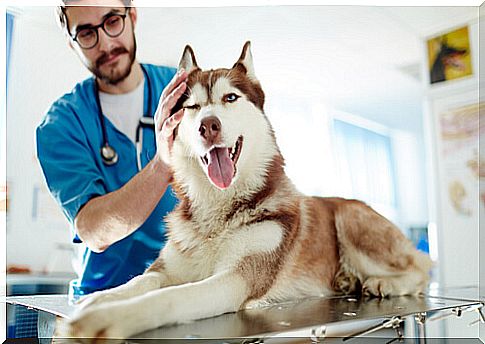
This call can save the life of our animal : we must speak calmly, state the urgency and go to the clinic as soon as possible.
5. If you have to intervene until you have veterinary help …
First of all, contact a veterinarian : he will provide you with the appropriate help and, if it is going to take time, can guide you until his arrival. In addition to describing the situation, you can take one of the following steps to give your dog first aid:
Suffocation
Open the animal’s muzzle and check that there are no objects in the dog’s mouth that hinder the passage of air into the windpipe.
Cut hemorrhage
If it’s a leg, wrap it in a clean bandage or cloth that can stop the bleeding.
Persistent diarrhea and vomiting
Write down the shape, consistency, color or if there is presence of blood. These data will help the veterinarian to establish a diagnosis; a sample can also be of great help.
Earache
Check that there is no foreign body plugging the ear. Infections are usually typical and cause otitis, and they are contagious, so isolate your pet if you think you can infect another animal in the house until the vet can confirm it.
Traffic accident
Avoid moving the dog abruptly, as it may have an injury or internal bleeding that could worsen with movement.
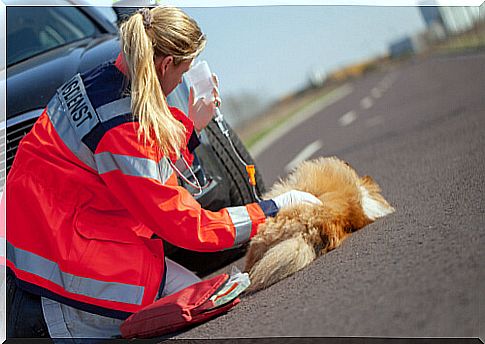
Wounds to the eyes
Don’t let the dog scratch or touch the affected eye. Try washing the eye with clean, warm water to remove any possible dirt.
Strange bodies
Foreign bodies such as spikes are common to be found on the nose, snout or eyes, and can cause significant damage. Check that nothing has been nailed to it.
Seizures
Make sure they can’t hit anything with furniture or objects during seizures. Keep the dog in a room without stimuli that can further disrupt his nervous system, and take note of the situation when the seizures began.
Poisoning
Bring a sample of the venom with you or write it down so your vet can act quickly and correctly. Knowing what caused the poisoning is critical.
Heatstroke
It is best to prevent heat stroke, for which the dog should always have access to fresh water. In addition, in summer and with high temperatures, avoid doing intense exercise or going out in the hottest hours. If heat stroke occurs, cool down your pet’s body.
The most important thing is to contact a vet who will handle the situation. If you are not in this situation, giving your dog first aid can save his life.

